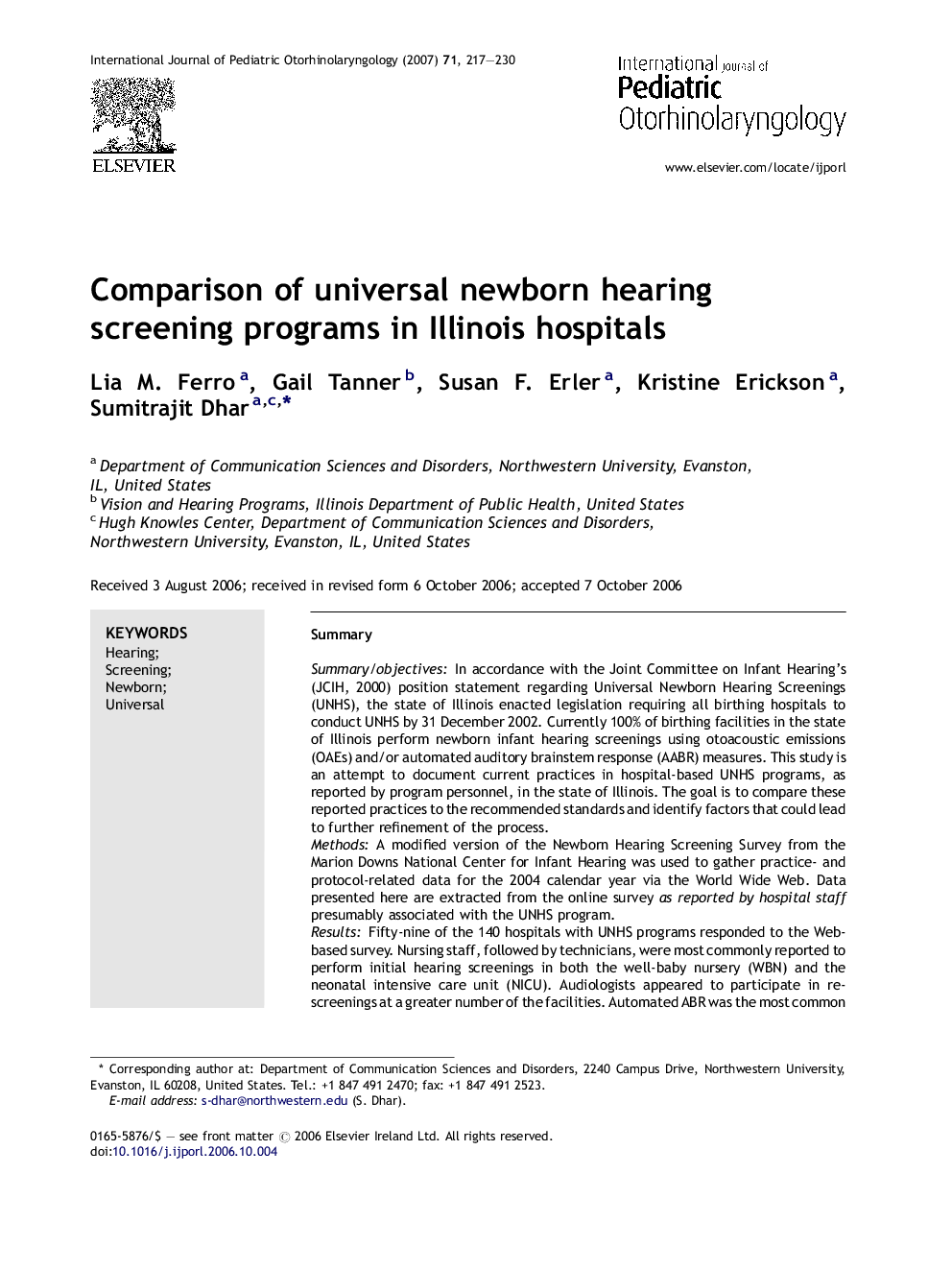| کد مقاله | کد نشریه | سال انتشار | مقاله انگلیسی | نسخه تمام متن |
|---|---|---|---|---|
| 4115687 | 1606098 | 2007 | 14 صفحه PDF | دانلود رایگان |

SummarySummary/objectivesIn accordance with the Joint Committee on Infant Hearing's (JCIH, 2000) position statement regarding Universal Newborn Hearing Screenings (UNHS), the state of Illinois enacted legislation requiring all birthing hospitals to conduct UNHS by 31 December 2002. Currently 100% of birthing facilities in the state of Illinois perform newborn infant hearing screenings using otoacoustic emissions (OAEs) and/or automated auditory brainstem response (AABR) measures. This study is an attempt to document current practices in hospital-based UNHS programs, as reported by program personnel, in the state of Illinois. The goal is to compare these reported practices to the recommended standards and identify factors that could lead to further refinement of the process.MethodsA modified version of the Newborn Hearing Screening Survey from the Marion Downs National Center for Infant Hearing was used to gather practice- and protocol-related data for the 2004 calendar year via the World Wide Web. Data presented here are extracted from the online survey as reported by hospital staff presumably associated with the UNHS program.ResultsFifty-nine of the 140 hospitals with UNHS programs responded to the Web-based survey. Nursing staff, followed by technicians, were most commonly reported to perform initial hearing screenings in both the well-baby nursery (WBN) and the neonatal intensive care unit (NICU). Audiologists appeared to participate in re-screenings at a greater number of the facilities. Automated ABR was the most common screening tool (80%) followed by Distortion Product OAEs (32%) and Transient Evoked OAEs (5%). Eighty-six percent reported referral rates that were less than 5%, with 32% reporting a referral rate less than 1%.ConclusionsAt the beginning of 2004, 99% of all infants born in Illinois were being screened for hearing loss. Personnel involvement and screening measures employed were comparable to the few reports available from other states. The audiologist's role was found to be fairly limited in screening, re-screening, or managing UNHS programs. Referral rates were consistent with national standards (∼1%). Management of UNHS programs in small, rural facilities, tracking/monitoring high-risk infants, and other services provided to families emerged as areas with room for improvement.
Journal: International Journal of Pediatric Otorhinolaryngology - Volume 71, Issue 2, February 2007, Pages 217–230